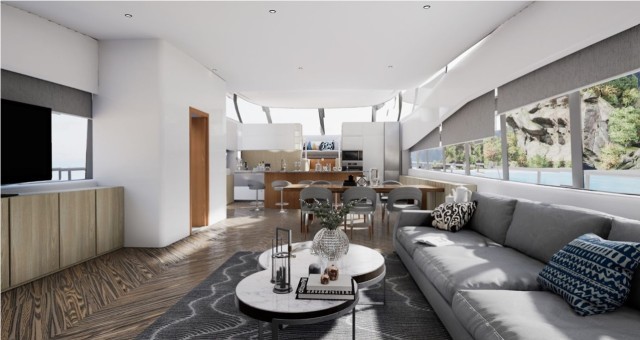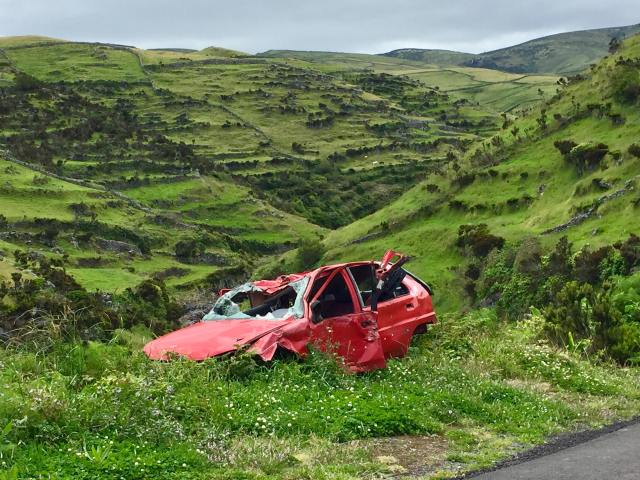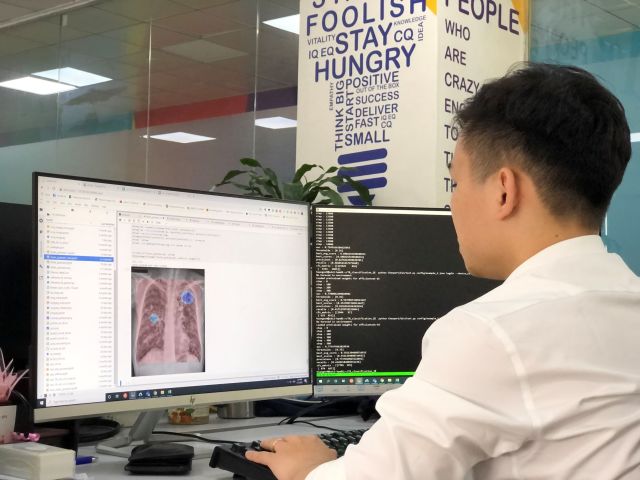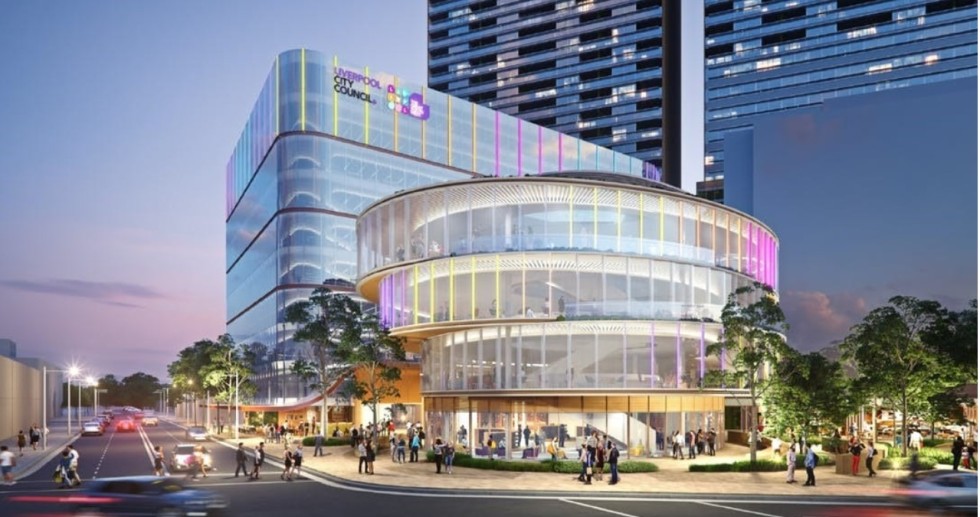Malaysia’s Gamuda is empowering its employees with access to generative AI (GenAI), enabling them to be more efficient and innovative in delivering engineering, construction, and public infrastructure projects in the region. The new tool is […]


Malaysia’s Gamuda is empowering its employees with access to generative AI (GenAI), enabling them to be more efficient and innovative in delivering engineering, construction, and public infrastructure projects in the region. The new tool is […]

The University of Canberra (UC) has reduced its IT infrastructure costs and optimised cloud computing expenses with the implementation of the Nutanix Cloud Platform. Founded in 1967, UC has a rich history of pioneering research […]

Lalamove has harnessed the power of Freshworks’ Freshdesk and Freshsales software to improve customer engagement and sales conversion. This move lets Lalamove connect with thousands of consumers and business partners, heralding a new era of […]

Migrating to a new enterprise resource platform (ERP) system presented Singapore University of Technology & Design (SUTD) with the opportunity to enhance its proprietary procurement system. Following the upgrade, the new version of SUTD Procurement […]

Unravel Carbon has selected the Snowflake Data Cloud to integrate their emissions inventory databases and decarbonisation solutions, and help organisations become more climate conscious. The Singapore-based startup aims to help large and medium-sized companies track […]

MyRepublic Digital has implemented the Boomi AtomSphere platform to improve real-time decision-making capabilities, efficiency and performance of its Encore cloud-native multi-tenant software as a service (SaaS) platform, resulting in better experience for customers. With Boomi’s […]

Aventis Learning Group is working with IBM to enhance its Training Management System (TMS) with IBM Watson Natural Language Understanding hosted on IBM Cloud. This new capability helps Aventis to offer better personalised learning courses […]

Most people would have heard of virtual reality (VR) or augmented reality (AR). However, some may not be aware of extended reality (XR), a hybrid of VR, AR and mixed reality. Taipei-based TCImage renovation studio […]

Frandulent claims are the bane of insurance companies. But how can one know if a case is not real? Driven by a bid to stem finanicial loss due to fake claims, India-based insurance firm IFFCO-Tokio […]

Singapore’s National University Health System (NUHS) has placed the NVIDIA DGX A100 system at the heart of its newly-launched Endeavour AI production platform. The first projects to run on the platform are range from predictions […]

Driven by its mission to infuse artificial intelligence (AI) into healthcare, VinBrain has developed AI-based healthcare solutions that help doctors make faster and better-informed decisions, improving the quality and consistency of healthcare to the public. […]

Thailand’s Siriraj Hospital has developed a chest X-ray imaging solution for tuberculosis that greatly reduces the time needed to analyse scans and expedites decision-making to save more lives. The solution is developed on and powered […]

Built into the sea, it is no wonder that corrosion is a common problem for offshore oil and gas platforms. In fact, it is a serious problem that can lead to structural damage and accidents, resulting in loss of lives, productivity and business.

Faced with a fast growing population, the city of Liverpool located 27 kilometers southwest of Sydney needed to ensure that traffic flow in its city centre continues to flow smoothly.
 Security is a major concern in airports, government buildings and major infrastructures around the world. Governments need to be able to quickly identify potential threats among the many people that enter and exit their countries daily. An effective facial recognition system is critical in safeguarding the country and critical infrastructures.
Security is a major concern in airports, government buildings and major infrastructures around the world. Governments need to be able to quickly identify potential threats among the many people that enter and exit their countries daily. An effective facial recognition system is critical in safeguarding the country and critical infrastructures.
 What does a fraudulent insurance claim and eye problem have in common? Well, both can be identified, thanks to powerful NVIDIA GPUs deployed by AIDA Technologies, a Singapore-based artificial intelligence (AI) startup which began in 2016.
What does a fraudulent insurance claim and eye problem have in common? Well, both can be identified, thanks to powerful NVIDIA GPUs deployed by AIDA Technologies, a Singapore-based artificial intelligence (AI) startup which began in 2016.
 Where’s a taxi when you need one? That’s the bane of passengers from around the world, except possibly in Taipei where taxis somehow seem to be just where you need them.
Where’s a taxi when you need one? That’s the bane of passengers from around the world, except possibly in Taipei where taxis somehow seem to be just where you need them.

Throughout the ages, men have always been searching for the mythical Fountain of Youth and ways to extend life. Needless to say, many have tried and failed.
At GTC South Asia, Monash University shared how it has leveraged GPU technology to transform the way research is done. Entelechy Asia catches up with the university’s Professor Paul Bonnington (Professor and Director of E-research […]
 David Fincher’s highly anticipated thriller Gone Girl starring Ben Affleck, Rosamund Pike and Neil Patrick Harris hits theatres on October 3. The film is generating as much attention for its star power as it is for the highly advanced production approach of the filmmakers. It’s the first feature shot entirely in 6K and the first feature to use NVIDIA Next-Gen Quadro GPUs. Edited by two-time Academy Award-winner Kirk Baxter, ACE, it’s also the first studio feature edited entirely in Adobe Premiere Pro CC.
David Fincher’s highly anticipated thriller Gone Girl starring Ben Affleck, Rosamund Pike and Neil Patrick Harris hits theatres on October 3. The film is generating as much attention for its star power as it is for the highly advanced production approach of the filmmakers. It’s the first feature shot entirely in 6K and the first feature to use NVIDIA Next-Gen Quadro GPUs. Edited by two-time Academy Award-winner Kirk Baxter, ACE, it’s also the first studio feature edited entirely in Adobe Premiere Pro CC.
The production system and workflow for Gone Girl is the most advanced technical design of any feature film to date. The filmmakers opted to shoot in 6K, but frame for 5K to have an ability to reframe and stabilise, with greater resolution than before. They also wanted to retain control over a majority of the post-production in-house to improve turnaround and reduce overall costs.
“Shooting in 6K, we had a large amount of RED media content to be converted and reviewed,” explained Jeff Brue, Post Engineer. “This, combined with a need for an ability during editorial for every shot to be reframed, posed a unique challenge.”

Tommy Bahama, which has an outlet in Wisma Atria, Singapore, has selected hybris Commerce Suite to improve its omni-channel commerce capabilities and create a more agile response to expanding market opportunities.
A leading retailer of island-inspired apparel and home furnishings, the brand has achieved rapid growth in online commerce over the past few years. In addition to the web, Tommy Bahama offers in-store kiosks, a commerce channel that enables an “endless aisle” of products available through the e-commerce warehouse, allowing shoppers to access out-of-stock or online exclusive items directly in-store.
To ensure the brand’s continued global expansion and establish a foundation for market and channel growth, Tommy Bahama needed a robust commerce platform capable of integrating with its existing Adobe Experience Manager solution to deliver a world-class, end-to-end user experience across all channels. hybris not only complements the Adobe Experience Manager but enables it to further create and deliver a heavily optimised user experience.
 By Edward Lim, Managing Consultant, CIZA Concept
By Edward Lim, Managing Consultant, CIZA Concept
Founded in 1987, Rhythm & Hues Studios is a visual effects company with corporate headquarters in El Segundo, California and production facilities in India, Malaysia, Canada, and Taiwan.
The studio has won the Academy Award for Best Visual Effects for Babe (1995), The Golden Compass (2008) and Life of Pi (2013), on top of four Scientific and Technical Academy Awards from the Academy of Motion Picture Arts and Sciences (AMPAS).
Computing power and unified platform needed
Lots of computing power are needed to create computer graphics imagery (CGI) in films. Besides this requirement, Rhythm & Hues also needed to standardize on a platform that can be used in its studios around the world. This unified platform is critical as work is shared and done concurrently in different parts of the world.
By Edward Lim, Managing Consultant, CIZA Concept
F ounded in 2006, Twistcode does research and development in high performance computing technology, especially massive-parallel computing and applications using central processing units (CPUs) and graphics processing units (GPUs). It thrives in accelerating any repetitive algorithm and/or process in most environments.
ounded in 2006, Twistcode does research and development in high performance computing technology, especially massive-parallel computing and applications using central processing units (CPUs) and graphics processing units (GPUs). It thrives in accelerating any repetitive algorithm and/or process in most environments.
With its focus on high performance computing, the young and dynamic company hopes to let its clients – enterprises and government organisations – concentrate on what’s important to them. It provides services such as rendering and modelling, and tweaks technologies and twist codes to adapt to customers’ needs.
Frustration over cell architecture
It was frustration over Sony’s cell architecture that prompted Twistcode to consider other options for its work.
 UK online fashion and beauty store ASOS has selected the hybris Commerce Suite to launch its new e-commerce business in China. Providing an omni-channel experience for those 420 million potential customers, the site will include a fully-integrated, feature-rich mobile version.
UK online fashion and beauty store ASOS has selected the hybris Commerce Suite to launch its new e-commerce business in China. Providing an omni-channel experience for those 420 million potential customers, the site will include a fully-integrated, feature-rich mobile version.
With six million active customers, ASOS stocks more than 60,000 branded and own-label products through each of its websites: UK, USA, France, Germany, Spain, Italy, Australia, and Russia. It ships to 241 countries and territories from its 1.1 million square foot global distribution centre in the UK.
According to a report from eMarketer released in February 2013, this year’s B2C e-commerce sales are expected to grow 18.3 percent to US$1.298 trillion worldwide as Asia-Pacific (APAC) surpasses North America to become the world’s No. 1 market for B2C e-commerce.
 By Edward Lim, Managing Consultant, CIZA Concept
By Edward Lim, Managing Consultant, CIZA Concept
Established in 2006 as a research institute at the National University of Singapore (NUS), the NUS Risk Management Institute (RMI) is dedicated to financial risk management. Its establishment was supported by the Monetary Authority of Singapore (MAS) under its program on Risk Management and Financial Innovation.
In 2009, RMI embarked on a non-profit Credit Research Initiative (CRI) in response to the financial crisis, with the intent to spur research and development in the critical area of credit rating. Besides being just a typical research project, it wanted to demonstrate the operational feasibility of its research and become a trusted source of credit information.
CRI currently covers more than 35,000 companies in 106 economies in Asia-Pacific, North America, Europe, Latin America, Africa, and the Middle East.
By Edward Lim, Managing Consultant, CIZA Concept Founded by Rich Ho in Singapore in 2004, Richmanclub Studios is a motion picture production company. Its first official production was the short film, “The Alien Invasion” in […]
 Global visual effects giant Rhythm & Hues (R&H) recently completed the lion’s share of visual effects shots on the acclaimed new film, “Life of Pi,” leveraging NVIDIA GPUs to maximize throughput and accelerate creative workflows. “Life of Pi,” from Academy Award-winning director Ang Lee, tapped legions of R&H artists at offices in Los Angeles, India, Kuala Lumpur, Vancouver, and Taiwan to create several hundred visual effects shots in stereo 3D that included the Bengal tiger, digitally recreated water and skies, Meerkat Island and myriad additional creatures and effects.
Global visual effects giant Rhythm & Hues (R&H) recently completed the lion’s share of visual effects shots on the acclaimed new film, “Life of Pi,” leveraging NVIDIA GPUs to maximize throughput and accelerate creative workflows. “Life of Pi,” from Academy Award-winning director Ang Lee, tapped legions of R&H artists at offices in Los Angeles, India, Kuala Lumpur, Vancouver, and Taiwan to create several hundred visual effects shots in stereo 3D that included the Bengal tiger, digitally recreated water and skies, Meerkat Island and myriad additional creatures and effects.
R&H is known for its custom development of proprietary visual effects tools, many of which are written specifically for the GPU. One of those tools, dubbed Rampage, was particularly instrumental in achieving the remarkable skies that set the tone in this tale of an Indian zookeeper’s son named Pi, shipwrecked with a Bengal tiger and adrift in the Pacific Ocean.